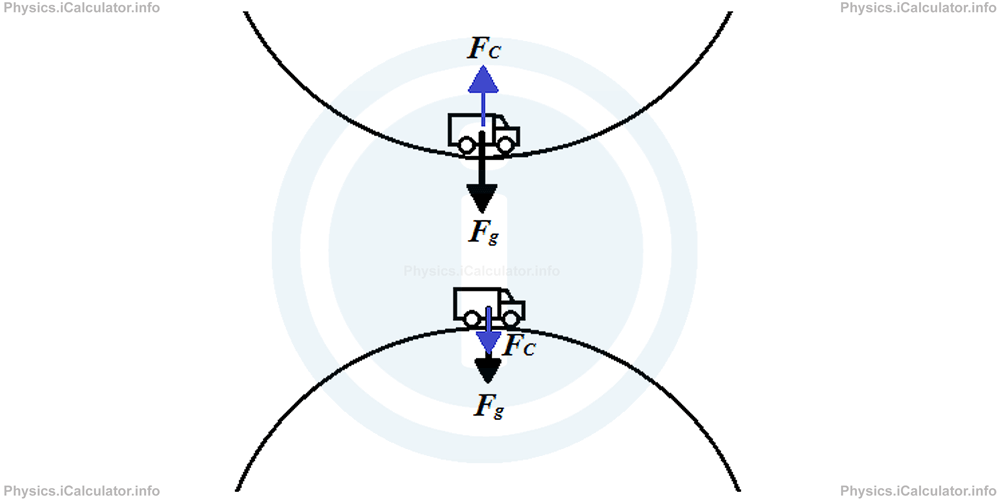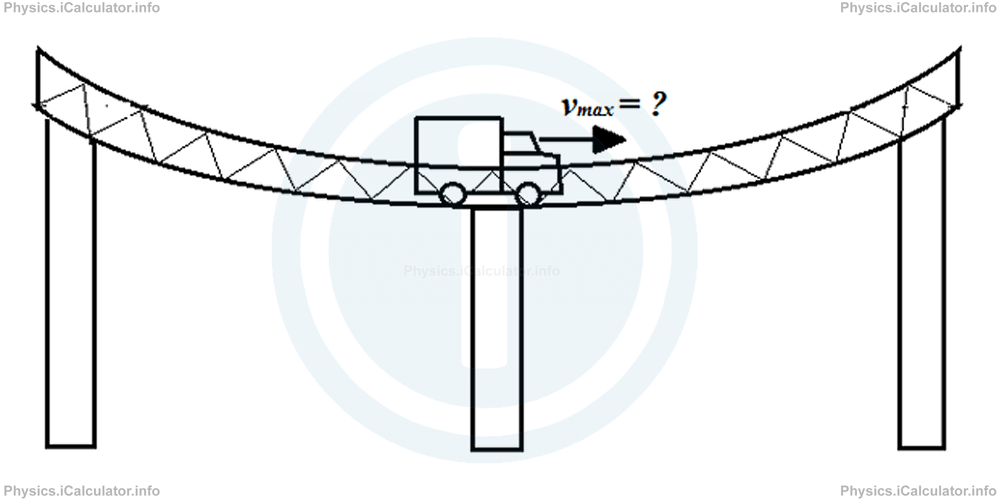Menu
Physics Lesson 7.3.2 - How does Centripetal Force Affect the Weight of Objects?
Please provide a rating, it takes seconds and helps us to keep this resource free for all to use
Welcome to our Physics lesson on How does Centripetal Force Affect the Weight of Objects?, this is the second lesson of our suite of physics lessons covering the topic of Centripetal Force, you can find links to the other lessons within this tutorial and access additional physics learning resources below this lesson.
How does Centripetal Force Affect the Weight of Objects?
As discussed in the PHysics tutorial on "Types of Forces I. Gravitational Force and Weight", weight is not always numerically equal to the gravitational force. The only case in which these forces are equal is when an object rests on a flat horizontal surface or moves together with the horizontal basement at constant velocity in any direction. In the abovementioned article, we discussed how the plane slope affects the weight. Thus, steeper the plane, smaller the object's weight.
Another factor that affects the weight is the vertical acceleration an object may have besides the gravitational acceleration. This extra acceleration may be linear as in the case when a lift starts moving upwards and due to the inertia (tendency to keep the previous state of motion) a person inside the lift weighs more than usual, or centripetal such as when a car moves along a vertical curve. In any case the equation of weight is
where Fg = m × g is the gravitational force exerted by the object and Fextra (vertical) is the other vertical force acting on the object. Thus, in the example of lift that starts moving upwards, this extra force is the upward force exerted by the lift's engine. However, we are not interested here for such scenarios but for those in which a centripetal force is involved, i.e. in scenarios similar to the abovementioned example in which a car is moving along a vertical curve. In this case, centripetal force is the extra vertical force discussed above and consequently, centripetal acceleration is the extra vertical acceleration involved.
Thus, when an object is moving at the lowest point of a circular path, the centripetal force is directed upwards (in the opposite direction to the gravitational force) and when it is moving at the highest point, the centripetal force is directed downwards (in the direction of gravitational force) as shown in the figure. 
Therefore, the equation of weight becomes
which means that when the object is at the highest point, it weighs less than usual as the Fg and FC are subtracted while when it is at the lowest point, it weighs more than usual as Fg and FC are added (two consecutive minuses become plus).
Example 2
A 10 t truck passes on a circular bridge as shown in the figure.

Calculate the maximum velocity the truck can have at the lowest point of the bridge if its radius of curvature is 40 m. The bridge can hold up to 12 t of load. For convenience, take g ≈ 10 m/s2.
Solution 2
We have 10 t = 10 000 kg and 12 t = 12 000 kg.
Gravitational force of the truck is
= 10 000 kg × 10 m/s2
= 100 000 N
The maximum weight the bridge can hold is
= 12 000 kg × 10 m/s2
= 120 000 N
From the equation of weight, we have
Centripetal force is in the opposite direction of gravity, thus, it must be negative. The scalar form of the above equation therefore is:
= Fg + FC
Therefore, the maximum centripetal force allowed to avoid harms in the bridge is
= 120 000 N - 100 000 N
= 20 000 N
Hence, we obtain for the maximum velocity allowed in the lowest point of the bridge:
v2 = FC × r/m
v = √FC × r/m
= √20 000 × 40/10 000
= √80
≈ 8.94 m/s
Thus, when an object is at the lowest point of a circular trajectory we have W > Fg and when it is at the highest point of a circular trajectory, then W < Fg.
You have reached the end of Physics lesson 7.3.2 How does Centripetal Force Affect the Weight of Objects?. There are 3 lessons in this physics tutorial covering Centripetal Force, you can access all the lessons from this tutorial below.
More Centripetal Force Lessons and Learning Resources
Whats next?
Enjoy the "How does Centripetal Force Affect the Weight of Objects?" physics lesson? People who liked the "Centripetal Force lesson found the following resources useful:
- Weight Feedback. Helps other - Leave a rating for this weight (see below)
- Rotation Physics tutorial: Centripetal Force. Read the Centripetal Force physics tutorial and build your physics knowledge of Rotation
- Rotation Revision Notes: Centripetal Force. Print the notes so you can revise the key points covered in the physics tutorial for Centripetal Force
- Rotation Practice Questions: Centripetal Force. Test and improve your knowledge of Centripetal Force with example questins and answers
- Check your calculations for Rotation questions with our excellent Rotation calculators which contain full equations and calculations clearly displayed line by line. See the Rotation Calculators by iCalculator™ below.
- Continuing learning rotation - read our next physics tutorial: Kinematics of Rotational Motion
Help others Learning Physics just like you
Please provide a rating, it takes seconds and helps us to keep this resource free for all to use
We hope you found this Physics lesson "Centripetal Force" useful. If you did it would be great if you could spare the time to rate this physics lesson (simply click on the number of stars that match your assessment of this physics learning aide) and/or share on social media, this helps us identify popular tutorials and calculators and expand our free learning resources to support our users around the world have free access to expand their knowledge of physics and other disciplines.